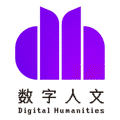您正在访问旧版存档页面。This is the old version archive of our site.
The Chili and Honey of Digital Humanities Research:The Facilitation of the Interdisciplinary Transfer of Knowledge in Digital Humanities Centers
作者:Mila Oiva, Tallinn University
转载来源:Digital Humanities Quarterly, 2020:14.3, http://www.digitalhumanities.org/dhq/vol/14/3/000464/000464.html
本文探讨了数字人文中心作为跨学科知识转移的焦点。它基于这样的假设:促进数字人文社区的知识转移活动的方式影响了它们产生的知识。本文通过对8位主管、研究人员和管理人员的半结构化访谈进行分析,探讨了数字人文专业人员如何描述数字人文中心跨学科知识转移的促进作用。研究表明,数字人文中心的知识转移是基于有机网络的重叠层和稳定的组织结构,支持各种知识共享实践。数字人文中心的知识转移将同一物理空间内的思想交流与不同层次的在线交流结合起来,从学术界之外的交流到研究小组内部的交流。此外,使信息流动的因素也具有限制潜在有意义的信息进入该领域的能力。因此,本文建议继续探讨数字人文中知识转移的边界问题是很重要的。
Mila Oiva
Mila Oiva is a Cultural Historian, digital humanist and expert on Russian and Polish history. She is currently finalizing her work as a postdoctoral researcher at the University of Turku in Finland and starting as a senior research fellow at the CUDAN ERA Chair, Tallinn University, Estonia. Her research focuses on computer-assisted analysis of transfer and circulation of knowledge, ranging from the 19th century press through the Cold War era trans-systemic interactions to the 21st century internet discussions.
